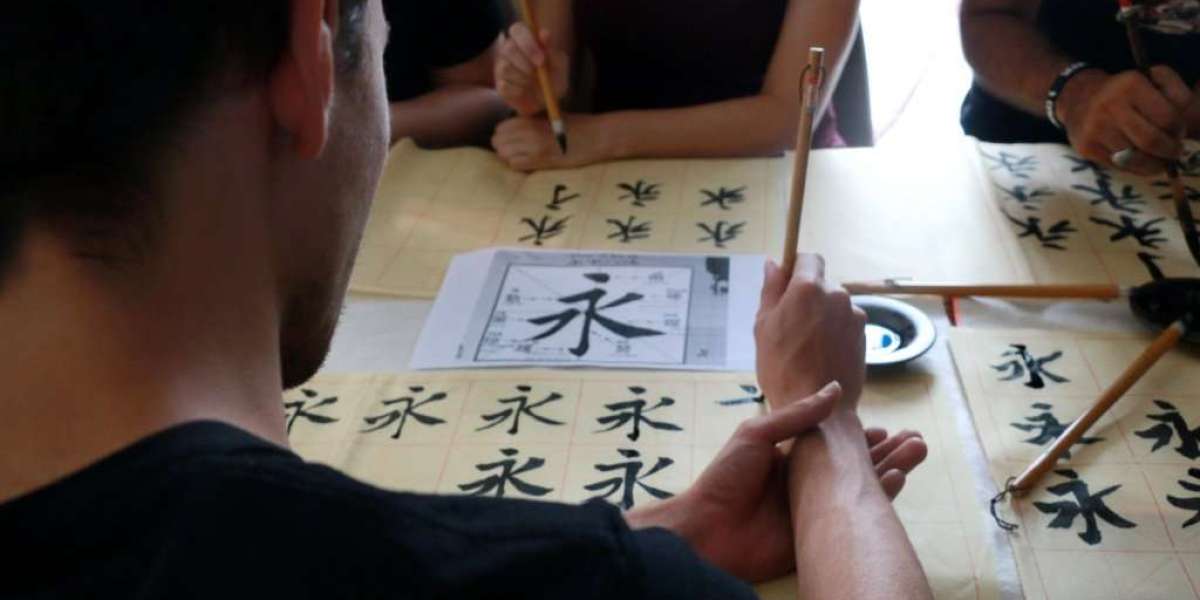Calligraphy in China is not just a method of writing—it is an ancient and revered art form that has played a significant role in Chinese culture for thousands of years. From the earliest inscriptions on oracle bones to the masterful brushstrokes of modern calligraphers, this art form represents a deep connection between the written word, artistic expression, and spiritual philosophy.
Throughout history, calligraphy in China has been an essential part of education, government, and personal expression. It has shaped cultural identities, influenced artistic movements, and continues to be a symbol of discipline and mastery. The beauty of Chinese calligraphy lies in its ability to transform simple characters into dynamic and expressive works of art.
A Historical Perspective on Calligraphy in China
Calligraphy in China dates back to the Shang Dynasty (1600–1046 BCE), when early Chinese characters were inscribed on turtle shells and ox bones as a form of divination. This practice evolved over centuries, with different dynasties contributing to the development of new script styles and artistic approaches.
The Qin Dynasty (221–206 BCE) introduced Small Seal Script, which standardized writing across the empire. Later, the Han Dynasty (206 BCE–220 CE) saw the emergence of Clerical Script, which became more practical for daily use. During the Jin Dynasty (266–420 CE), Cursive Script and Running Script gained popularity, adding fluidity and expressiveness to the written form.
By the Tang Dynasty (618–907 CE), calligraphy in China had reached its golden age. Masters like Ouyang Xun, Yan Zhenqing, and Huai Su refined various styles, setting high artistic standards that are still admired today. The Song Dynasty (960–1279 CE) introduced more personal and spontaneous styles, with Su Shi and Mi Fu revolutionizing calligraphy by blending it with poetic expression.
Even in the modern era, calligraphy remains an essential part of Chinese culture. Whether in traditional ink paintings, inscriptions on monuments, or contemporary digital art, the influence of calligraphy is everywhere.
The Artistic and Philosophical Essence of Calligraphy in China
Unlike Western calligraphy, which often focuses on decorative letterforms, calligraphy in China is deeply intertwined with philosophy and personal cultivation. The way a character is written reflects the emotions, temperament, and personality of the calligrapher. This connection to personal expression is why many scholars and artists consider Chinese calligraphy a form of visual poetry.
The practice of calligraphy is closely linked to Daoism, Confucianism, and Zen Buddhism. The control of brush strokes, the balance of ink and paper, and the rhythmic flow of characters require discipline and mindfulness. Calligraphy masters often emphasize harmony, balance, and spontaneity, reflecting principles found in nature and traditional Chinese thought.
Each stroke in Chinese calligraphy carries a sense of movement, almost like a dance. A well-executed calligraphy piece conveys energy, precision, and artistic freedom. The empty spaces around the characters, known as "white space" or "negative space," are just as important as the inked areas, creating a dynamic balance that enhances the overall composition.
Calligraphy Tools and Techniques
The practice of calligraphy in China requires four essential tools, known as the Four Treasures of the Study (文房四宝):
Brush (笔, bǐ) – Calligraphy brushes are made from animal hair, such as wolf, goat, or rabbit. The flexibility of the brush allows for varying stroke thicknesses and styles.
Ink (墨, mò) – Traditional ink is made from soot mixed with animal glue, formed into solid ink sticks. Artists grind the ink stick on an inkstone with water to create the desired consistency.
Inkstone (砚, yàn) – The inkstone serves as a grinding surface for mixing ink with water, ensuring smooth application on paper.
Paper (纸, zhǐ) – Xuan paper, also called rice paper, is highly absorbent and allows for smooth brush movements.
Chinese calligraphy techniques emphasize brush control, stroke order, and composition. Every character follows a structured sequence of strokes, ensuring balance and readability. The variation in pressure and speed creates different artistic effects, making each piece unique.
The Role of Calligraphy in Chinese Society
Calligraphy in China has long been associated with education, government, and social status. In ancient times, mastering calligraphy was a requirement for scholars and officials, as it was essential for passing the imperial examinations. Elegant handwriting reflected intelligence, discipline, and refinement, making it a highly respected skill.
Even today, calligraphy plays a role in cultural celebrations, such as the Chinese New Year. Red banners with auspicious calligraphy messages are displayed on doors and walls to bring prosperity and good fortune. During festivals and ceremonies, skilled calligraphers create personalized scrolls with meaningful characters, adding a touch of tradition to modern life.
Beyond its cultural significance, calligraphy is also a therapeutic practice. Many people engage in calligraphy as a form of meditation, finding peace in the repetitive and mindful strokes of the brush. The rhythmic movement and focus required to create beautiful characters promote relaxation and mental clarity.
Calligraphy in China Today: A Blend of Tradition and Innovation
Despite the digital age, calligraphy in China continues to thrive. Many artists and designers incorporate traditional calligraphy into contemporary art forms, fashion, and branding. From modern graphic design to logo creation, the influence of Chinese calligraphy remains strong in visual communication.
Social media and online platforms have also brought calligraphy to a wider audience. Digital calligraphy tutorials, online workshops, and AI-generated brush scripts have introduced younger generations to this ancient art. However, traditional brush calligraphy remains highly valued, with enthusiasts and scholars preserving its authenticity through dedicated practice.
The international appreciation for Chinese calligraphy is growing, with exhibitions and workshops held worldwide. Many art collectors seek original calligraphy pieces, recognizing their cultural and artistic significance. Whether through museum displays, art galleries, or academic studies, calligraphy continues to captivate audiences across different cultures.
Final Thoughts
Calligraphy in China is more than just an art—it is a bridge between the past and present, tradition and innovation, discipline and creativity. This ancient practice embodies the essence of Chinese culture, reflecting history, philosophy, and artistic expression through each brushstroke.
Whether as a meditative practice, a decorative art form, or a symbol of cultural heritage, calligraphy remains a timeless treasure. Its influence continues to inspire artists, scholars, and admirers worldwide, ensuring that the beauty of Chinese calligraphy lives on for generations to come.








